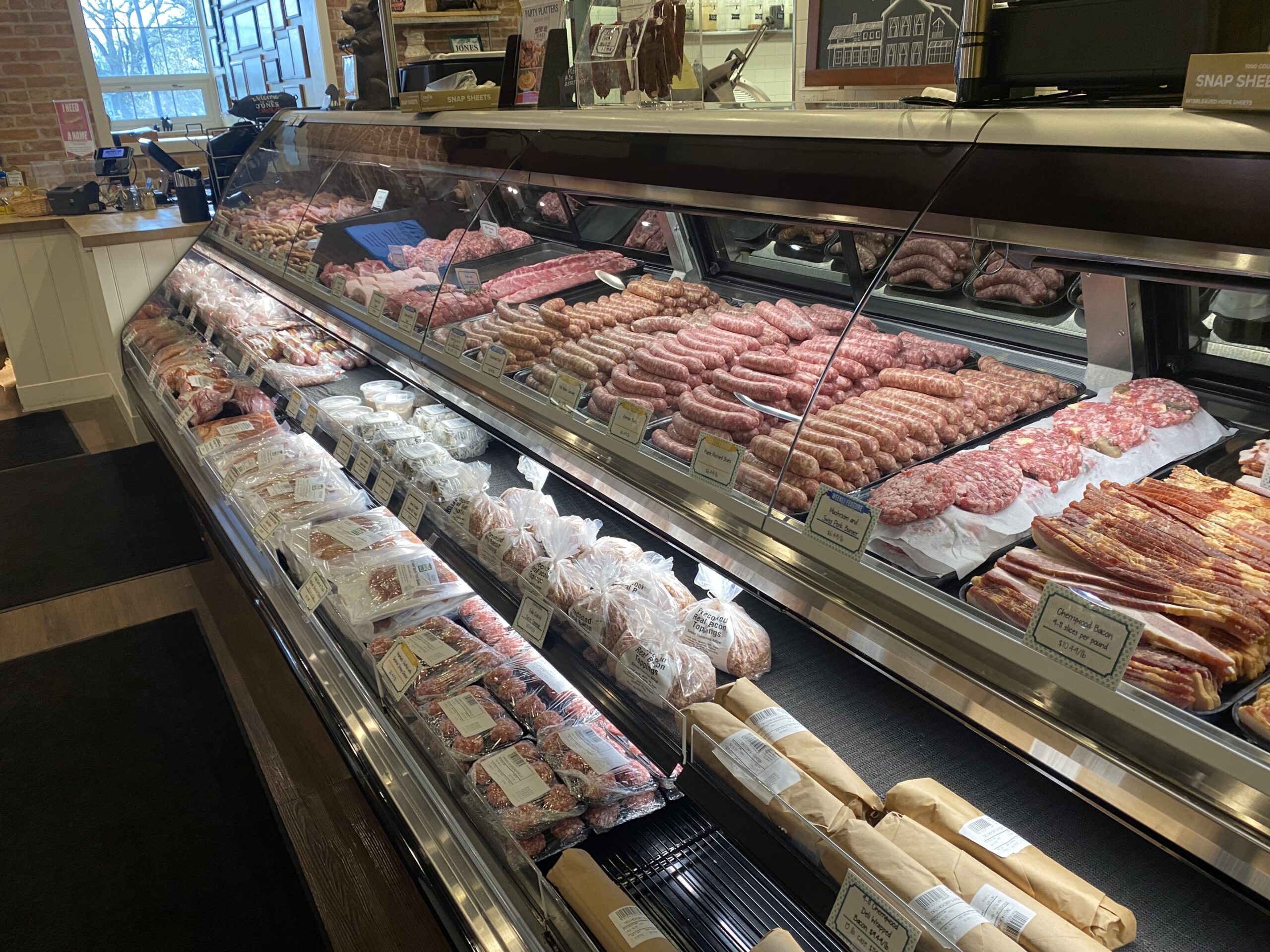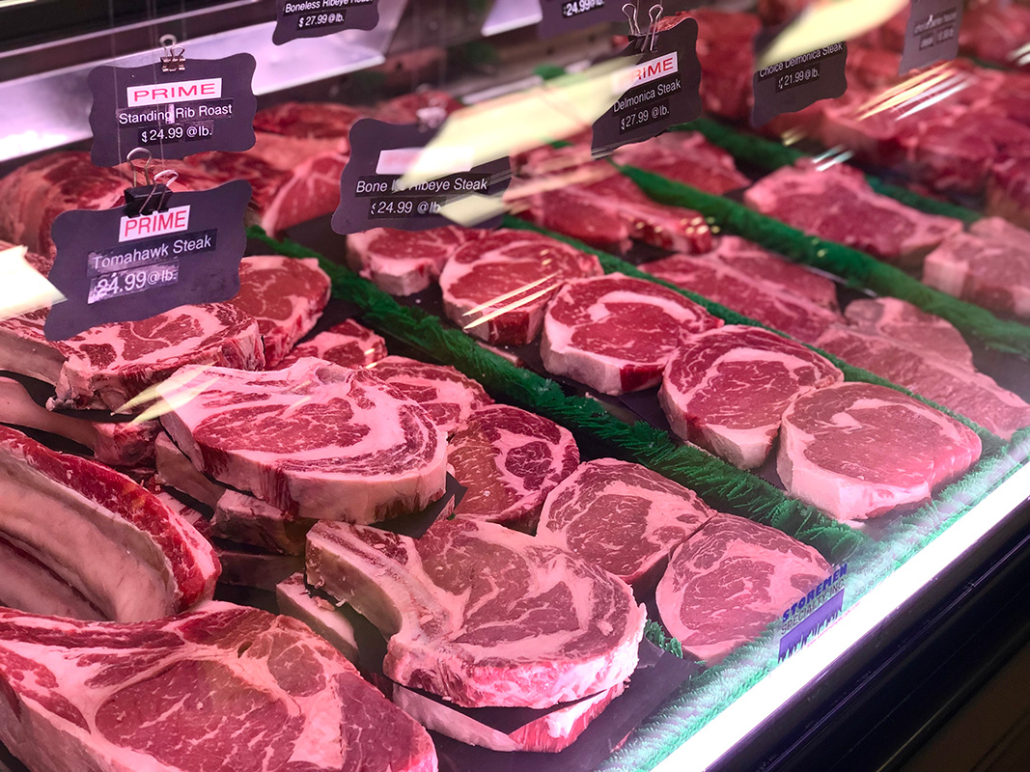Why Bagley Farms Meat Market Edwardsville IL Is the most effective Selection for Top Quality Meats
Uncover the Art of the Butcher's Cut in a Modern Meat Market
In the ever-evolving landscape of contemporary meat markets, the butcher's cut has actually transcended its standard roots, combining age-old workmanship with contemporary techniques. What genuinely sets the contemporary butcher apart is their ability to forge a deeper link in between consumers and the beginnings of their meat.
Development of Butchery Strategies

The mid-20th century saw butchery methods further refined by scientific understandings right into muscle mass biology and meat aging, enhancing both inflammation and preference. Advancements like vacuum packaging and refrigeration expanded item shelf-life, enabling butchers to diversify offerings and boost top quality control. This duration also noted the surge of customized devices, such as band saws and meat slicers, which increased accuracy and effectiveness in meat processing.
Computerized systems currently aid in tracking animal provenance and enhancing cuts to meet details client choices. Additionally, a rebirth in artisanal butchery has arised, blending standard abilities with modern expertise to cater to customers looking for ethical and lasting meat alternatives.

Comprehending Meat Cuts

Understanding the intricacies of meat cuts is important for both butchers and consumers looking for top quality and value. Each cut comes from a various component of the animal, passing on unique tastes, appearances, and food preparation methods. Mastery of these distinctions not only enhances culinary experiences yet likewise makes best use of the energy of each carcass. For butchers, accurate cuts reflect ability and respect for the craft, ensuring marginal waste and ideal yield.
The key classifications of meat cuts include primitive, sub-primal, and retail cuts. Primal cuts, such as the loin, rib, and chuck, are the huge sections originally separated from the carcass. Butchers after that break these down better into sub-primal cuts, prior to finally generating retail cuts available to customers, like ribeye or tenderloin. Each stage calls for careful focus to anatomical framework and muscular tissue structure.
Understanding muscular tissue composition is vital; muscles utilized extra regularly by the animal often tend to be harder and are best suited for sluggish food preparation methods, while less-used muscle mass, like those discovered in the loin, are extra tender and suitable for cooking or roasting. Familiarity with these distinctions equips customers to make informed choices, improving their cooking undertakings.
Selecting Quality Meat
Choosing the right meat involves greater than simply selecting a visually appealing piece from the display. The art of selecting quality meat calls for a critical eye and expertise of details features that symbolize quality and excellence. First of all, take note of the color; beef needs to have an intense, cherry-red tone, while lamb must display a soft pink tone, and pork a pale pink. This indicates the meat is fresh and hasn't been exposed to oxygen for also lengthy.
Secondly, consider the marbling, which describes the white flecks of fat within the muscle mass. Appropriate marbling is an essential indicator of inflammation and flavor, as it thaws throughout cooking, improving the meat's juiciness. Remember, greater marbling commonly correlates with exceptional top quality cuts, such as USDA Prime.
Appearance is another essential aspect; meat should really feel strong to the touch, not slimy or extremely soft. Furthermore, bear in mind the scent. Fresh meat must have a tidy, neutral smell, devoid of any type of sour or repulsive odors.
Combining Cuts With Cooking Techniques
Successfully combining cuts of meat with the suitable food preparation techniques is essential for accomplishing optimum flavor and texture. Various cuts differ in tenderness, marbling, and connective tissue material, each calling for specific methods to open their possibility. Tender cuts like filet mignon and ribeye, with their integral marbling, benefit from high-heat, quick-cooking methods such as barbecuing or pan-searing. These techniques boost the meat's all-natural flavors and make sure a juicy coating.
Alternatively, harder cuts like brisket and chuck roast are abundant in collagen, which damages down into gelatin when cooked slowly. These cuts are perfect for braising or slow roasting, allowing the meat to tenderize over time and develop deep, intricate tastes. Likewise, you can try this out cuts such as brief ribs and pork shoulder get on well with slow-cooking techniques, where extended cooking times transform their durable appearances right into succulent meals.
Lamb shanks and oxtail, which need prolonged cooking to tenderize, are ideal candidates for cooking or sluggish simmering. These techniques coax out rich, passionate tastes while preserving moisture. By understanding the one-of-a-kind features of each cut, cooks and home cooks alike can boost their cooking developments, guaranteeing each dish is both pleasing and unforgettable.
The Butcher's Role Today
Navigating the advancing landscape of the modern meat market, the butcher's duty today extends past simple prep work of cuts. Contemporary butchers are culinary artisans, instructors, and advocates for lasting techniques.
In addition to crafting specific cuts, butchers now involve straight with clients, supplying cooking advice and customizing options to suit private demands and preferences. Their expertise in meat aging, marbling, and taste accounts empowers consumers to make educated choices, enhancing their culinary experiences. This individualized solution exemplifies the butcher's developing function as a relied on advisor in the kitchen.
Additionally, butchers are crucial in minimizing waste, using whole pets to develop varied items such as sausages and stocks - bagley farms meat market edwardsville il. This extensive method not just values the pet yet additionally aligns with contemporary sustainability goals. learn the facts here now In this means, the modern butcher embodies both tradition and development, adapting to an ever-changing market this post while protecting the creativity and stability of their craft

Verdict
The modern butcher's craft elaborately weaves traditional strategies with contemporary innovations, stressing sustainable practices and honest sourcing. Mastery in recognizing varied meat cuts and quality indications equips butchers to provide enlightened recommendations, straightening particular cuts with ideal food preparation methods. This proficiency not just boosts cooking experiences but likewise strengthens the connection in between consumers and the beginnings of their food. By recognizing historical techniques while embracing modern needs, the butcher's role continues to be vital in today's innovative meat market.